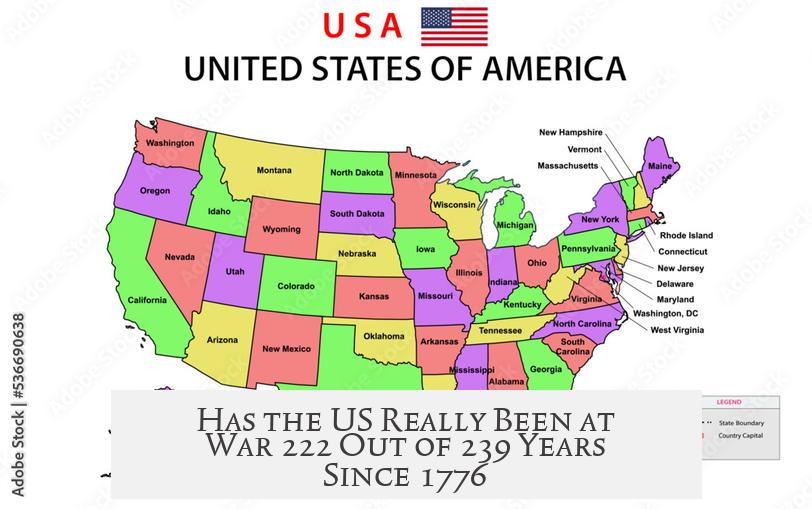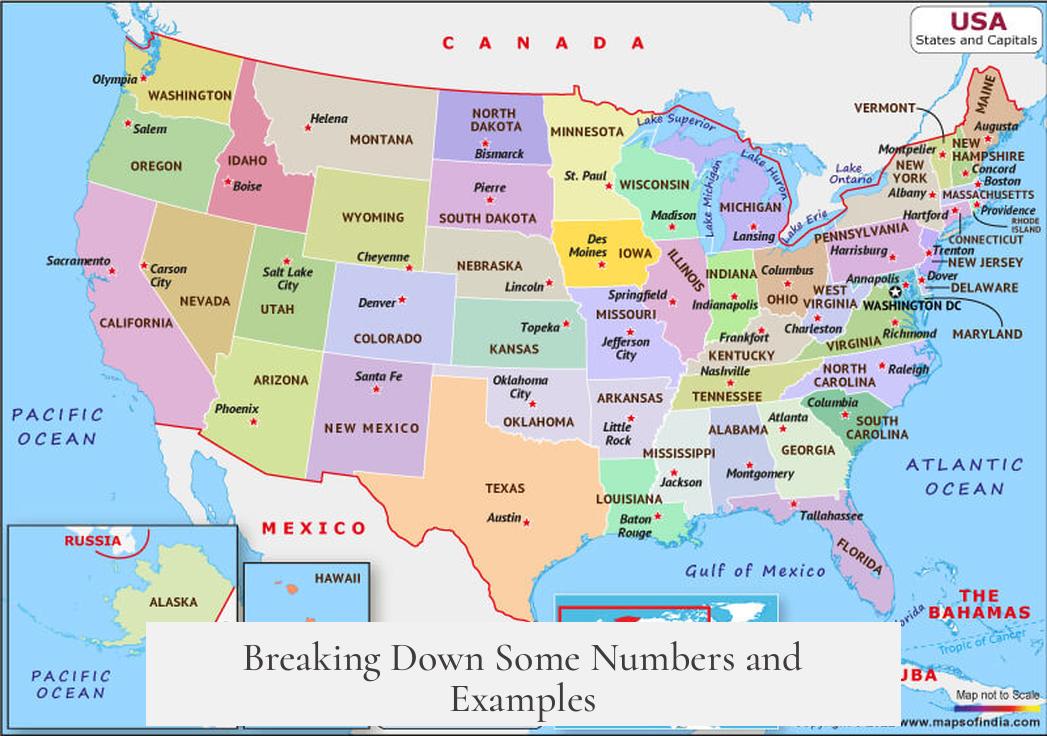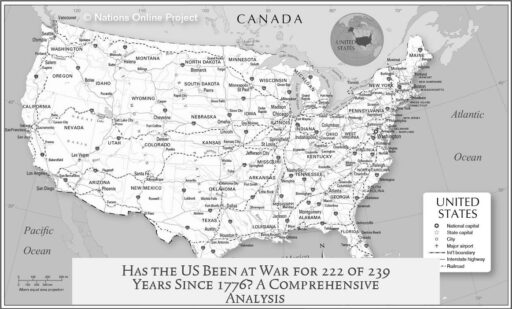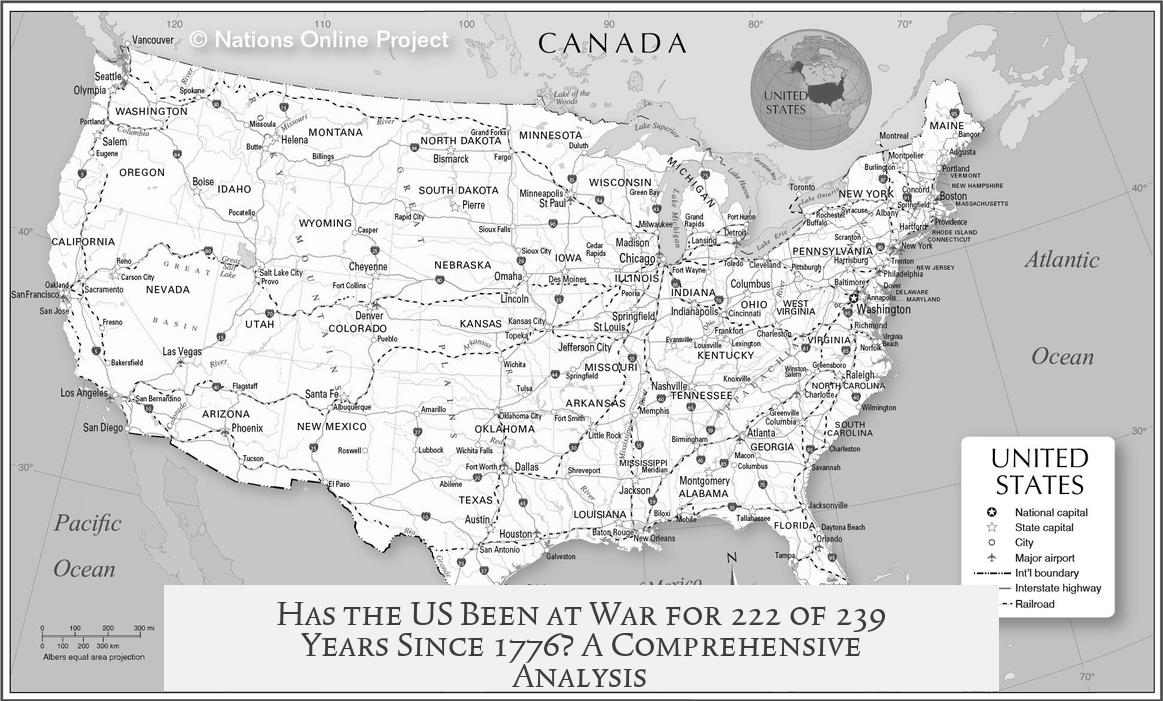The claim that the United States has been at war 222 out of 239 years since 1776 oversimplifies complex military and political realities. This figure often includes every military or security operation, not just formally declared wars or all-out conflicts. Such broad inclusion distorts the definition of “war” by mixing minor engagements and peacekeeping missions with major conflicts.
The distinction between war and military/security operations matters. The U.S. frequently undertakes operations to safeguard national security or respond to threats. These actions do not always meet the full criteria of war. For example, peacekeeping missions, counterterrorism strikes, or small-scale interventions count as military actions but not large-scale wars.
Congress plays a crucial legal role. Under the U.S. Constitution, only Congress can declare war. Since World War II, Congress has not officially declared war, despite extensive military involvements such as Korea, Vietnam, Iraq, and Afghanistan. Most modern conflicts are authorized via resolutions or executive actions, not formal declarations.
Comparatively, many nations engage regularly in military operations, sometimes continuously. Using the metric that any military action counts as war would label nearly all countries as being perpetually at war. This broad interpretation lacks precision and inflates perceptions of conflict.
| Aspect | Explanation |
|---|---|
| Declared War | Formal declaration by Congress; last declared war was WWII |
| Military Operations | Includes varied missions like peacekeeping, counterterrorism, and small conflicts |
| All-Out War | Large-scale conflict involving mobilization and significant combat |
This nuanced understanding underscores the difference between actual wars, military interventions, and security operations. Reporting them all under the term “war” leads to misconceptions about the U.S. military posture over centuries.
- The U.S. has not been formally at war for most years since 1776 using a strict definition.
- Military and security operations vary greatly in scale and intention.
- Congressional war declarations have been rare after WWII, despite ongoing conflicts.
- Other nations also engage in repeated military actions, so the U.S. is not unique in this pattern.
Has the US Really Been at War 222 Out of 239 Years Since 1776?

The short answer: Not exactly. While it feels like the U.S. has been embroiled in conflict nearly nonstop, the claim that America has been “at war” for 222 out of 239 years since 1776 oversimplifies the reality—mixing full-scale wars with military or security operations that don’t equate to traditional war.
Let’s unpack this claim with a dose of honesty and some nuance, shall we?
What Counts as War Anyway?
The first hurdle is defining what “war” means. Most people picture large armies clashing on battlefields, entire nations mobilizing, and congress formally declaring war. But recent decades have shown us that the military undertakes a wider range of actions—counterterrorism, peacekeeping, interventions, and security missions—that sometimes get lumped into the category of “war.”
For example, the claim about 222 years of war often counts every military operation, no matter how small or short-lived, as a full-blown war. This is misleading.
“Many lists equate basic military or security operations with all-out war, which frankly distorts the picture.”
Operations to safeguard a nation—like limited interventions, anti-piracy missions, or peacekeeping—are fundamentally different from all-out wars like WWII or the Civil War. So, if you hear “222 out of 239 years,” remember that many of those years involved military actions that did not rise to the level of declared or full-scale wars.
Who Decides We’re at War? The Role of Congress
Legally speaking, the United States has a very clear protocol on war declarations: Only Congress can declare war. This is spelled out in the U.S. Constitution. So, even if troops are deployed abroad and combat is happening, the country might not be “at war” in the legal sense.
Since WWII, Congress has not officially declared war, though there were numerous conflicts—like Korea, Vietnam, Iraq, and Afghanistan—where the U.S. engaged in extended combat. These were authorized through other Congressional resolutions or presidential orders but lacked a formal declaration.
This raises an important point: calling every military campaign a “war” ignores constitutional nuances.
Is America Specially War-Happy or Just Like Everyone Else?
Another angle worth considering is comparison. If you apply the “at war most of the time” metric to other nations, you’ll find it’s not unique to the U.S. Most countries have military engagements over long periods. Continuous or frequent military operations are standard for many nations trying to protect interests or face ongoing conflicts.
So, the perception of America as uniquely “always at war” oversimplifies global military reality. We need to view such claims in a broader, international context.
Breaking Down Some Numbers and Examples

| Era/Conflict | Type | Formal Declaration? | Duration | Remarks |
|---|---|---|---|---|
| Revolutionary War | Full-scale war | Not formally declared (pre-Constitution) | 1775-1783 | War for independence |
| Civil War | Full-scale war | No formal US declaration | 1861-1865 | Internal conflict |
| World War II | Full-scale war | Yes | 1941-1945 (US involvement) | Last formal Congress-declared war |
| Korean War | Military operation | No | 1950-1953 | Called a UN “police action” |
| War in Afghanistan | Military campaign | No | 2001-2021 | No formal declaration, but longest conflict |
Notice how only the big wars got formal declarations. The “wars on terror,” Iraq, Afghanistan—these were major campaigns but not technically declared wars by Congress.
Why Does This Matter?
Does it change anything if the phrase “at war” is stretched to include military operations? Absolutely. How we define “war” shapes public perception, informs political debates, and influences foreign policy.
Presenting military actions as nonstop war may hyperbolize the reality, possibly stirring unwarranted fear or complacency. At the same time, ignoring extended military engagements underplays the human and financial costs involved.
Understanding the distinction between declared war and military campaigns helps clarify what citizens are really being asked to support or oppose.
What Can We Learn From This?
- Question bold claims. When you hear the U.S. has been “at war” for 222 years, ask what kind of conflict is being counted.
- Distinguish between formal war and military/security operations. Not all missions equal war.
- Keep context in mind. Compare with global patterns to get a balanced perspective.
- Recognize the importance of Congressional declarations for a legal war status.
A Final Thought
America’s history includes long periods of military involvement, but all-out war isn’t the entire story. The glass isn’t completely full, nor completely empty. It just looks different when examined closely. If you crave a clearer picture, dig beyond headlines and buzzwords.
So the next time someone exclaims, “The U.S. has been at war 222 out of 239 years!”, you’ll have the facts—and a smile—to set the record straight.




